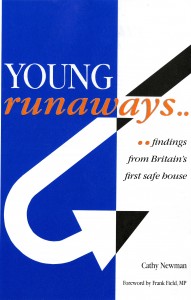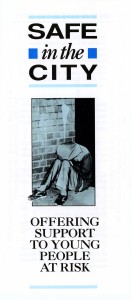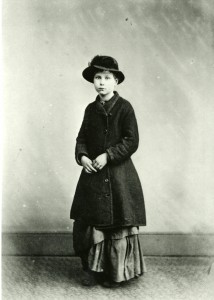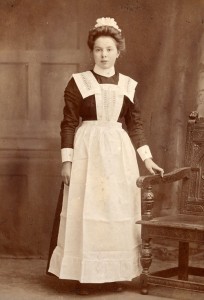Another in the series of our blogs that takes a look at the history of The Children’s Society’s former children’s homes and social work projects since 1881 – this one featuring the charity’s work with young runaways and their care and support.
Central London Teenage Project: a pioneering Project for young runaways
In 1985 The Society opened a pioneering new Project called the Central London Teenage Project (known as CLTP). This Project accommodated young people who had runaway from home and were living on the streets of London.
The purpose of the Central London Teenage Project was to provide accommodation until the young person could be either returned to their parents or moved into suitable care, with the aim of achieving this as quickly as possible. This was an innovation providing a refuge for young people who had run away in the London area.
One of the core functions of the Project was to address the reasons why children run away. The Project worked to gain the trust of the young person and resolve the problems before helping them to return home. In working with young runaways, this was a new direction.
The Project emerged as a key area of The Children’s Society’s work. CLTP intervened with children and young people who were at risk of exploitation or abuse and provided a safe refuge for them. In its first year the Project worked with over 200 young runaways – coming from places all over Britain to London.
In 1990 the Project established a Safe House to provide longer term accommodation for young runaways. This was known as CLTP 2. The extension of the Central London Teenage Project was due to recognition in The Children’s Society of the need for more work with young runaways.
Also in 1990 two similar Projects were opened by The Children’s Society elsewhere in the country to work with young runaways. These were Safe in the City in Manchester and Leeds Safe House. Like CLTP, these Projects provided a refuge for young runaways and worked with them to try and resolve the difficulties that had led to them running away.
Helping Runaways Since 1881 – the work of CLTP was founded on a century of working with young runaways.
In its early days The Children’s Society ran children’s Homes across the country, when it was known as the Waifs and Strays Society. These Homes looked after vulnerable children and young people, large numbers of whom had run away from their family homes.
Take the example of Lily, who came into the care of The Children’s Society in 1894. Lily’s mother had died, leaving Lily and two of her younger siblings in the care of her father, who was described as being a drunken and violent man. At the age of 14, Lily and her two younger siblings ran away from home to escape his ill treatment.
Lily was referred to The Children’s Society by the NSPCC and went to live in The Society’s home, St Chad’s, in Far Headingley near Leeds. Here she was taught a trade to help her find future employment and support herself financially once she was old enough. After two years in St Chad’s Home, Lily went to live with her aunt in Normanton, Yorkshire.
The Present Day
Unfortunately, the conditions that force children to run away from home were not restricted to the 1890s or the 1980s. Children who run away from home today face the same pressures and need just as much help.
The Children’s Society’s work with young runaways continues to this day, with the Make Runaways Safe Campaign
The growth and development of The Society’s new social work projects from the late 1970s onwards is discussed in the following blog ‘A New Reality’: http://www.hiddenlives.org.uk/blog/2015/06/new-reality-gateway-magazine-winter-1975/
Records relating to all of the projects and homes featured in this blog are held at The Children’s Society Archive.
For information about The Children’s Society Archive’s ‘Hidden Lives Revealed’ web site: http://www.hiddenlives.org.uk/
or you can consult the Archive’s on-line catalogue: http://www.calmview.eu/childrensociety/Calmview
If you would would like to know about how The Children’s Society continues to change children’s lives today, visit the charity’s website: http://www.childrenssociety.org.uk/




